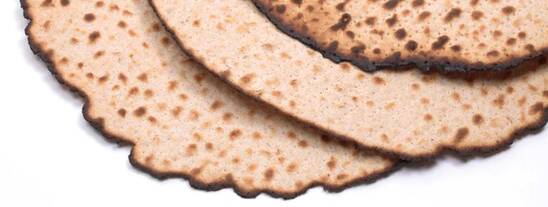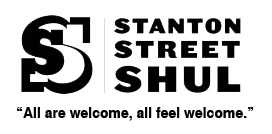  
Rabbi Staller's Pesach Prep Schedule
Thursday morning is the fast of the first born. Try to make it to a Zoom Siyum. Reach out to Rabbi Leead if you need help finding one. If you miss it, it is better this year not to fast.
If you are selling Chametz with Rabbi Leead the form must be filled out by Thursday night, and if you are planning to Kasher any utensils for Pesach the Kashering must take place befoe Pesach begins.
Bedikat Chametz takes place Thursday night, after 7:54 PM. If you do not do it then, you can do it up until Saturday morning, worst case. If you are going away for the holiday, make sure to do a Bedikah in the hotel/airbnb you're staying in. Here is a link to the text and basics of Bedikat Chametz.
We burn Chametz Friday morning. There will be a burning outside the Bialystoker Shul. We do not recite our second Bitul/Nullifcation statement until we are done eating Chametz– most likely Saturday morning. If you cannot burn, you can either flush it down the toilet or throw it out and douse it with bleach/soap to render it inedible.
Please remember to light a long-burning candle before Shabbat so you will have a flame to light from Saturday night. A standard Yhartzeit candle might not burn long enough, so ideally try to find an even longer burning candle if you can.
You must finish eating Chametz, including the bread for your Shabbat meal, by 10:56 AM Saturday morning. Additionally, by this time you must destroy any Chametz remaining (flush it, or throw it out and pour soap/detergent on it), and must recite your last Bitul/Nullifcation statement. If for whatever reason you oversleep and are not able to eat bread by 10:56 for your Shabbat meal, you can use Egg Matzah, but treat it like Chametz for all intents and purposes after you are done with it, and put it away for Pesach.
Rabbi Staller's Pesach Prep Resource List
In preparation for a particularly challenging Pesach, between COVID and the unusual schedule of a Saturday night Seder, I’m including some resources early to help get us prepared for Pesach: - I encourage everyone to please review this schedule of events surrounding Pesach. Managing the needs of Shabbat and Pesach are particularly challenging this year, so it is essential that everyone read this chart well in advanced of Pesach and reach out to me with any questions. We will have a Shiur the week of Pesach to prepare the speciifc details.
- Similarly, my colleague, Rabbanit Leah Sarna, has produced an extremely useful Minimalist Passover Guide that walks one through everything needed to host their own Passover. Highly recommended.
- Similarly, for those running a Seder for the first time, feel free to consult Jeff’s Pesach Essentials.
- For the sale of Chametz, there are a couple options. I will be selling Chametz with MTJ and the Lower East Side community. Here is a Chametz Sale Form. Don’t wait til last minute. This process takes some time, so don’t get caught right before Pesach. Alternatively, if that is too complicated, you can sell your Chametzonline through Chabad. Halakhically, that is not my preference, but if that is easier for people, it is acceptable.
- Please consult this guide for advice on how to Kasher your kitchen. If a particular question or circumstance arises, please reach out to me with any questions.
- Consult the OU Passover Guide for general questions, such as which items require special Passover certification and which don’t, or reach out to me.
- The Shul will be collecting charity for the Mitzvah of Ma’ot Chitim, the Passover commandment to ensure that the poor in your neighborhood are taken care of before engaging in your own Seder. Donations can be made to the Shul here, just specify that it is for Maot Chitim. The money will be dedicated specifically to causes focused on feeding the hungry locally in New York, such as the Bowery Mission and Masbia Soup Kitchen. Unless specified otherwise, we will assume the entire donation is intended for charity, so if you intend to also donate to the Shul, please specify.
- Stay tuned for Pesach Programming in the Shul! With the vaccine rollout being widened, we are hopeful that in addition to our usual services we will be able to provide some form of safe first night Seder for any who need in the community. Stay up to date with the announcements, and reach out if you need any help.
Because many of us are not able to attend shul in person, the Rabbi has agreed to share his shabbat morning drashah in advance. Here is part of it. To read the full drashah, click here and it will take you to a rich archive of all of Rabbi Staller's drashot.
Parshah Tzav
In our Pre-Pesach Zoom Shiur this week, in which we went over the practical halakhot surrounding preparing for Pesach, someone raised an interesting and important point. For the days and weeks leading up to Pesach, all of us are frantically searching our homes for Chameitz, and disposing of it well before Erev Pesach ever comes around. In fact, while Erev Pesach we say a Brachah on Bedikah and Biyur, searching and destroying Chameitz, at that point we have already done numerous Bedikot and Biyurs, as we have searched, found, and disposed of Chameitz in the lead up to our formal Thursday night Bedikah. Given that reality, the final Bedikah and Biyur that we do seems oddly ritualistic, and perhaps even without a purpose. Why do we spread out a few pieces of bread and hold on to them to burn Erev Pesach morning– risking that we might forget, or miss something, and undo all of our hard work and cleaning? Isn’t it enough that we have ensured, in the days leading up to Pesach, that our home is Chameitz free? Indeed, the Minchas Chinuch says if you have no Chameitz in your house come Erev Pesach, you have fulfilled your Mitzvah of Biyur! So what then is the purpose of this overly ritualized Chametz ceremony?
Indeed, it seems like there is something to this Biyur Chameitz ritual, as our generation did not invent this idea of saving Chameitz just to burn it. It seems that this has been the practice in the Jewish community since the earliest recordings of Biyur Chameitz. One particularly shocking tradition is brought down in the name of Rav Yoel, the father of the Raavyah– one of the great Ashekenazi Tosafist Halakhists. The Mordechai records that Rav Yoel used to specifically hold on to Chameitz until the prohibition of Chameitz kicked in– risking violating the prohibition of having Chameitz Erev Pesach– in order to burn his bread only after it has actively been endowed with the status of “Chameitz.” The rest of the year, bread is just bread. It’s only when the prohibition to eat Chamietz sets in that bread is transformed into Halakhic “Chameitz.” But if the whole point of burning Chameitz is just to ensure our households are leaven-free come Pesach, who cares if you have technically burnt Chameitz or not? Isn’t it just better to get rid of it as early as possible and be done with it?
To understand our ritual, I think we have to look at an unusual ruling of the Rambam. Rambam rules that if one actively purchases or creates Chameitz on Pesach, they would receive lashes for violating the prohibition of owning Chameitz. The Minchas Chinuch points out that this ruling of the Rambam is surprising. In general, when we have a Lav HaNitak LeAsseih– a prohibition that is connected to a corrective action, instead of getting lashes, you just take the corrective action. So, for example, it is prohibited to leave over meat of the Paschal offering uneaten. But, if you do leave it over, instead of lashing you, you can correct it by burning up the left over meat so there is nothing left. If that’s the case, why doesn’t Rambam rule that Chameitz you buy or make on Passover can simply be burnt, as a corrective measure to avoid lashes?...continued
Click HERE to read the Rabbi's full Drasha |
|







